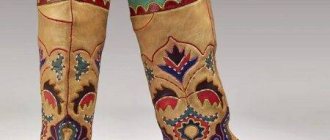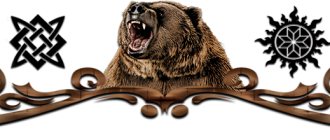All relatives, friends, neighbors are invited to the celebration; everyone is welcome here - even those who happen to be at the celebration by accident. To the accompaniment of national music, songs and dances, the bride and groom are escorted into their new family life.
Everyone knows that among the Caucasian peoples, parents independently choose a partner for their child. According to tradition, the betrothal ceremony takes place after obtaining consent for the marriage of relatives on both sides. Moreover, a long time can pass between the painting and the betrothal ceremony - up to three years.
Choosing a bride and matchmaking in the Caucasus
Among the peoples of the Caucasus, parents have always taken an active part in choosing a bride or groom. For example, among the Yazidis, parents agree on the wedding of their children while the children are still small. Children grow up and follow their parents' choices. Although, these days this happens less and less.
Lezgin parents learn about their son’s choice through his friend. Then they gather a family council, where they discuss the merits and demerits of the future wife. The eldest man in the family has the final say. If he approves of the choice, then the groom's parents choose a close relative and send him to obtain consent from the girl's parents.
Among Armenians and Azerbaijanis, parents of adult unmarried (unmarried) children still communicate with each other and select a partner for their child. Parents or relatives also go to matchmaking. Matchmakers come to the girl's house and bring gifts for her. After several such visits, they receive consent to betrothal.
Matchmaking
Matchmaking is an essential part of wedding preparations. Previously, all issues in this regard were dealt with by parents, that is, they were the ones who decided the fate of their children. At the age of 12, the girl already knew who she would marry. Of course, a lot depended on the status of the clan; families were not selected at random; marriage should be of equal value. Nowadays, this is considered a relic of the past, as young people themselves choose their brides.
The tradition of matchmaking has been preserved, but not in its entirety. First, a date is set, the groom's first visit to the bride. He comes with his male relatives to visit with the intention of getting married. In turn, the bride's parents may think for a while before giving an answer. If the decision is positive, a date for the second matchmaking is set. It is held solemnly, with laid tables, dancing, etc. At the end of the evening, the father, giving his daughter in marriage, voices a positive decision.
Betrothal of Caucasian newlyweds
A few days after obtaining the consent of both parties, the engagement ceremony takes place. The groom and his parents come to the house of the future wife, and they present the girl with gifts (ring, dresses, sweets, shoes) and praise her (the bride) in every possible way. The girl's family sets the table. A holiday is held during which the groom or the groom's brother (different nations have different ways) puts a ring on the bride.
In Dagestan, during engagement, girlfriends smear henna on their palms, fingers and toes, so that the road to happiness will also open up for them. In some Lezgin villages, after betrothal, newlyweds should not see their new relatives, nor see each other. At the time of engagement, the wedding date is set.
From one to three years can pass between the engagement and the painting itself. Both sides are thoroughly preparing for the celebration. They often get married in the fall, after the harvest is harvested. Wedding celebrations last from two to seven days, depending on the financial situation of the parents. Poor families walk for one or two days. There is another feature of Caucasian weddings - bride kidnapping. The bride is usually kidnapped a couple of days before the wedding and taken to the house of the groom's parents. There they take care of her and please her so that she does not want to return home before the wedding.
Accessories and shoes
A veil is present in wedding clothing in this country, however, it is often complemented by a luxurious scarf decorated with lace embroidery, a tiara or a characteristic crown. The headdress can be complemented with a veil, so the image of the newlywed turns out to be even more tender and mysterious. A snow-white hijab made from the finest fabrics instead of a traditional veil.
The wedding attire must be accompanied by appropriate shoes. Traditionally, these are luxurious shoes that harmonize in color with the shade of the bride’s outfit. For winter weddings, the option of elegant ankle boots is acceptable.
There should be a lot of jewelry: the abundance of rich decor and hand embroidery on the dress itself and the headdress is complemented by large earrings, rings, and necklaces. A Chechen bride should shine at a wedding, so she demonstrates not only her beauty, but also the degree of wealth of her parents, which is important for this country.
Ransom of a Caucasian bride
On the day of the betrothal, the groom's parents gave the bride's parents a deposit of the ransom. The remaining part was passed on to relatives after a few days. On this day there was a holiday with treats in both houses.
The collection of bride price was more common among wealthy families. The ransom was paid not only in money, but also in grain and sheep. In addition, the groom was obliged to buy the bride a wedding outfit, everyday clothes and a pair of boots or shoes. In poor families, the ransom was limited to the fact that the groom bought the bride a wedding dress and gave her parents a small amount of money. Which was often much less than the dowry.
And according to tradition, the groom must take care of where he will bring his wife. And she talks about furniture and the decoration of this house.
Styles
Wedding dresses must be floor length. Variations of the fluffy dress, the so-called “princess” style, are popular. The bodice in it can be corseted, but must have a high collar and a closed back.
A Greek silhouette of a dress with a high waist and long sleeves is allowed. A luxurious, large train is the main attribute and distinctive feature of the wedding image of a Chechen bride.
Any style is generously decorated with ethnic gold embroidery, beads, rhinestones, and large stones. The abundance of rich, sparkling decor is a characteristic feature of Chechen wedding attire.
Traditions at Caucasian weddings
Caucasian peoples usually have two weddings. First the bride's wedding, then the groom's wedding. The wedding takes place in the girl’s home and (among some peoples) only women attend. On this day, the groom comes for the bride with gifts - he gives her gold jewelry, clothes, shoes and other things. Among Armenians, the groom's side prepares gift baskets in advance, with which he goes to the bride. And the bride’s side, having received these baskets, also gives small gifts and souvenirs in return.
When the groom leaves her house with the bride, the groom's brother pays a symbolic ransom to the girl's parents. Then the wedding begins at the groom's house. Both men and women are already present here. There are traditions that must be observed upon arrival of the newlyweds:
- When the future wife enters the courtyard of the groom's house, it is customary to throw candy or money at her feet.
- at the entrance to the house, a ram (lamb) is slaughtered and its blood is spilled at the bride’s feet. Some peoples smear his blood on the bride's forehead.
- Also, before entering the house, the girl must break two lying plates with her foot - to drive out evil. And step on the threshold with your right foot so that her life can be correct.
- among Lezgins, the mother and sister of the groom meet the bride on the threshold of the house with honey. She must taste the honey or (among other nations) treat the groom's relatives with it.
- It is customary among the Yazidis to decorate the tree with ribbons and apples so that the newlyweds are fertile. The groom must pick a red apple from this tree and hit the bride in the head so that she gives birth to a child as healthy as this apple.
All Caucasian peoples have a mandatory tradition - the dance of the bride and groom. And always accompanied by national music. In some weddings, this is the only dance that the newlyweds dance.
Of course, under the influence of modernity, many old traditions of Caucasian weddings are changing or completely becoming a thing of the past. The saturation of a wedding with national elements now directly depends on the region of residence. In villages, weddings in traditional national style are more common than in cities. And in the cities, newlyweds try to diversify their wedding by introducing new elements into it.
Caucasian wedding dresses - photos
| Discover the best gift ideas for Men, Women, Girls and Boys. |
Nowadays, no one is particularly delighted with a designer dress, or any unusual suit, but a wedding dress in the Caucasian style can surprise many. The traditions of the mountains, the purity and decency of the bride - many people dream of such a wedding. It is worth paying great attention to the selection of a dress. Dresses for a wedding in the Caucasian style can also be taken by those who do not have connections with these regions, but want to add a little exotic direction to the decorum of modern dresses, and a real mountain beauty in a national guise will be simply incomparable. In addition to the dress, she will be accompanied by parental instructions and wishes, which are stored and transmitted in every piece of the national costume with a centuries-old history. Chechen
A Chechen woman is a modest girl who does not need to highlight her beauty in any particular way with rather revealing clothes. One look or gesture is enough to seduce a man. This is exactly what Chechen wedding dresses embody. They are quite modest, but make the bride charming. Caucasian costumes are not only clothing, but also a memory of ancient customs and traditions. A real dress must contain an undershirt with a standing collar. This denotes the bride's decorum. The shirt is accompanied by a beautifully decorated dress of moderate pomp. A characteristic feature of this suit is the slit at the front. A silver-colored belt and shawl gives a special royal charm to the lady. The belt is made of real silver, and the shawl is rich in lace, since a woman from the East is a treasure that needs a setting. All women want to be elegantly dressed, not dressed up in tasteless crinolines. This idea was picked up by designers, modernizing classic Chechen dresses. Caucasian wedding dresses are, as a rule, a combination of classic dresses with popular snow-white bridesmaid dresses. Such models are truly unique suits, approaching the best French products in their style and sophistication. Armenian
This is exactly how Armenian wedding dresses appeared, which contain classic national notes and a commitment to snow-white light fabrics. An obligatory element of such an outfit is embroidery, barely noticeable patterns in the national style, which you like at first sight. Ossetian
Dresses in the Ossetian style are also quite luxurious. This outfit emphasizes the girl’s young age, her youthful charm and modest appearance. It is young ladies who look especially beautiful in such outfits. An essential part of this costume is an incredible headdress with a shawl; it adds royal charm to the young bride. It is appropriate to wear a braid under this headdress, or simply let your hair down. Such natural beauty attracts men much more than revealing cutouts. A Caucasian wedding dress is always a sign of taste and sophistication. Even among a large number of beautiful dresses, a bride in national attire will attract attention.
The best gifts you need:
|
Newlyweds' cortege
Many guests are invited to the celebration dedicated to the merging of two hearts. This means that the tuple must also match. Often it includes several dozen machines. Car riding is quite noisy and fun. All cars honk, notifying everyone around about the joyful event. Young Caucasians are very impulsive, so sometimes you can hear gunshots. The guys shoot in the air, confirming the news of the upcoming celebration.
Traditionally, one of the cars carries carpets that are laid under the bride’s feet so that she does not touch the ground. This custom is not always observed, but it does occur.











